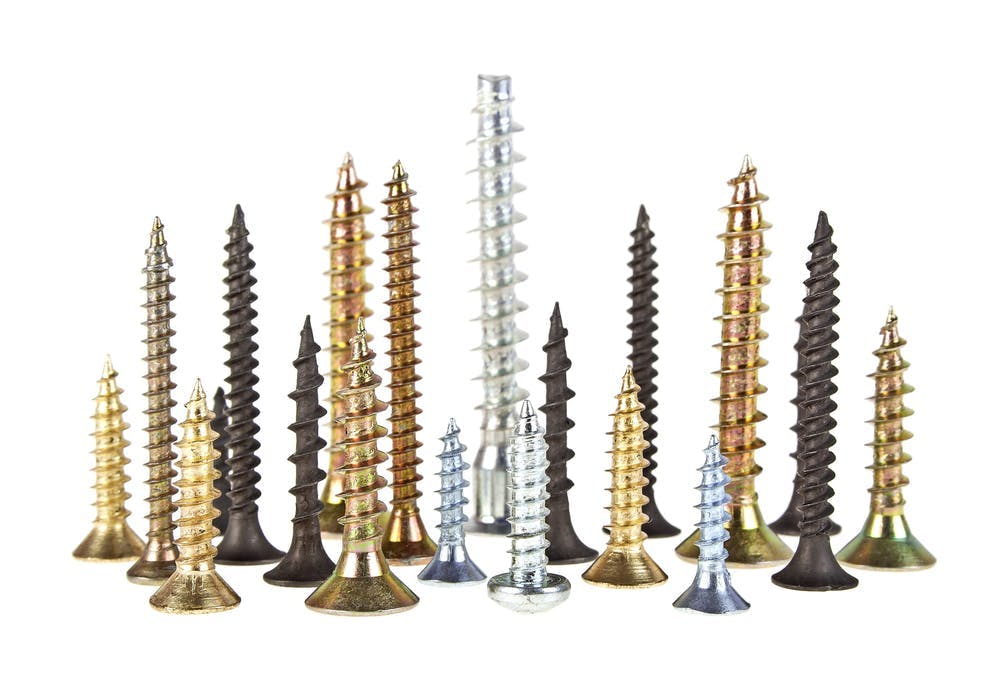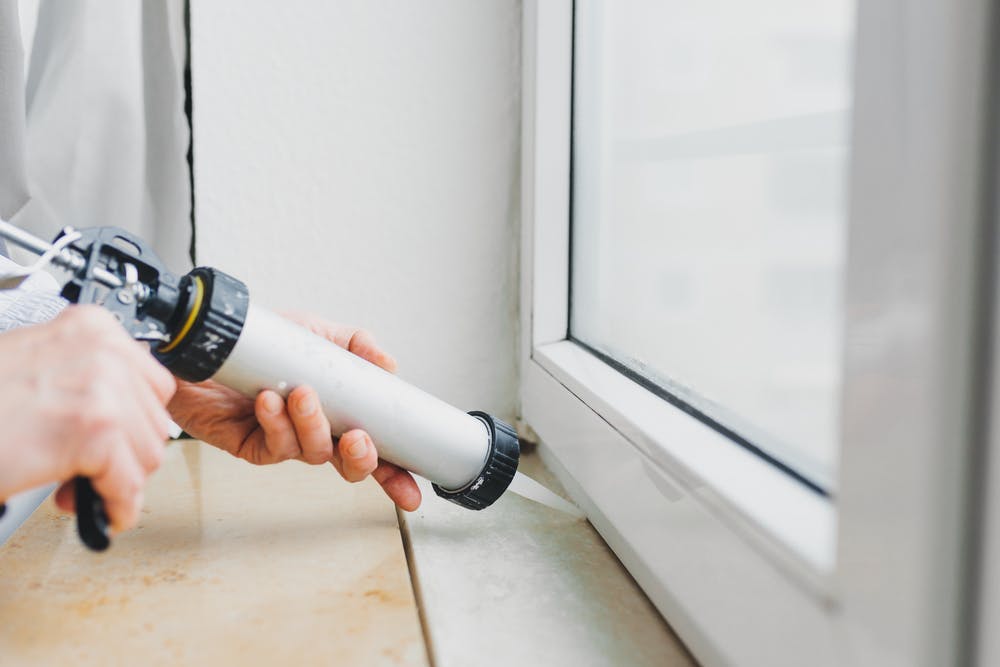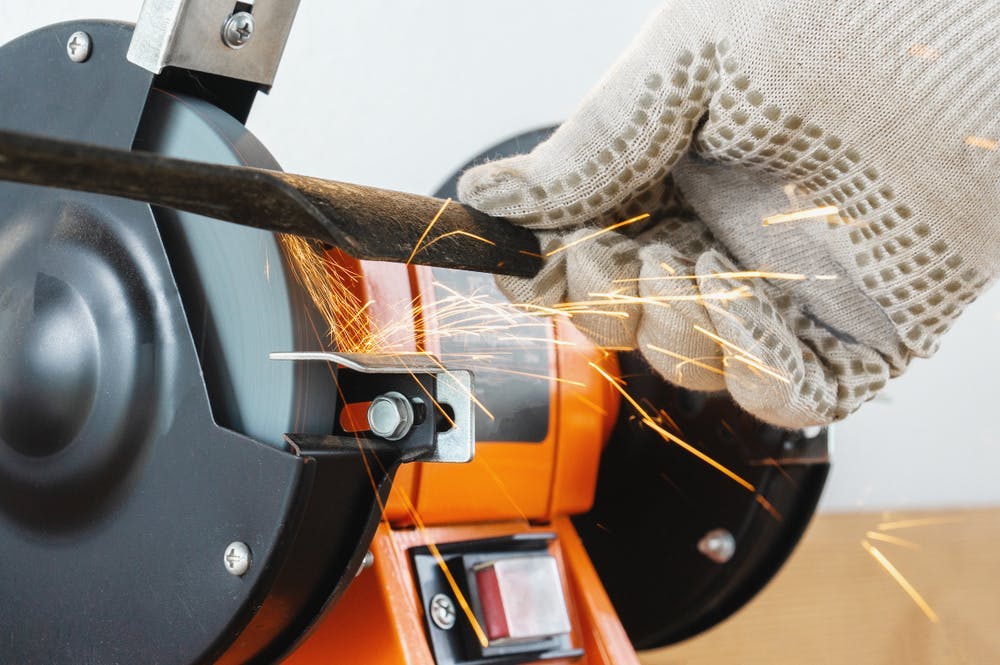Guide to toolbox essentials and tool maintenance

We take a look at the essentials that any tradesperson will need for their toolbox, and the maintenance tips and products that will extend the life of any larger tools that you may need for a job.
Screws
A good selection of screws should never be underestimated. The chances of their ever being a job where screws aren’t involved are slim, so you should be sure to take a decent supply wherever you go. Whether they’re small screws to attach basic components or fixtures, or long, sturdy screws with exceptional load bearing capacity, your toolbox should have a section that’s full to the brim.
Pair these with a good range of driver bits to help you get the job done in record time.

Sealants
From caulking to blend fixtures and fittings seamlessly into walls, through to waterproof sealants to make bathroom electronics safe and secure, your sealant selection can achieve much more than just an attractive finish. Lighting and wiring installations will nearly always leave a gap, and sealing them ensures you leave your customer worry-free and ready to go.
As well as this, sealing and draught proofing any property is vital to creating a comfortable and energy efficient environment. For more information about sealing and draught proofing best practices, read our article on the topic here.

Plasterboard accessories
When working with plasterboard, the last thing you want to do is use the wrong fixtures and fittings. Plasterboard fixtures are specially designed for working with drywall, a particularly common sight in modern housing.
Coupled with plasterboard plugs, you’ll have everything you need in your toolbox to create a strong bond between any fixture and the wall you’re working with.
How do you maintain tools?
Maintaining your tools is easily the most cost effective way to make sure you are always ready for any job. Keeping your tools in working order doesn’t have to be a tiresome job, and if you do it regularly the rewards will be well worth it.
There are five things you need to think about: storing, cleaning, caring, sharpening and replacing.
Storage tips for tools
Tools are often left out in vans, basements, garages or sheds - all places where dust and damp can set in. While tools are designed to be sturdy, they’re not indestructible, and over time can succumb to wear and tear just like anything else.
A toolbox or shelving unit will help keep everything in order and away from the elements, and will also make things easier to find when you need them.
Before using any tool, inspect it carefully for signs of damage and do not use anything that is showing visible damage.
If it’s been stored and used correctly, your tools should last a long time, but you don’t want to leave it to chance and turn up to a job that you’re unable to complete.
Cleaning tips for tools
After using your tools, it’s important to clean them to get rid of any dirt, dust or debris that might have built up on the job.
Turn off your tools and disconnect them from any power source, before wiping them down with an old but clean rag or cloth. You should also check for any signs of rust and treat them with a rust remover.
For hand tools such as hammers and screwdrivers, it’s worth looking for any splinters that may have occurred over time. Sand these down to prevent the handles from breaking. Finally, check the heads of any hammers and grind any ‘mushroom’ splays away. Left untreated, these can grow worse and cause your hammer head to shatter while in use.
Caring tips for tools
Caring for your tools should be a regular job. It doesn’t have to take long, and it could well save you a much more expensive job in the future.
You should lubricate any moving parts to keep them running smoothly. Machine oil will generally do the trick, but be sure to check the manual to see if the manufacturer has any other recommendations.
Batteries and chargers also need to be maintained. Cordless tools are incredibly convenient, but they only work as long as their batteries are in good condition. It’s a good idea to fully charge and then fully discharge batteries once every couple of weeks, and don’t leave them unused for too long.
Store any batteries and chargers you aren’t using in a cool, dry place, and clean contacts with a cotton bud and alcohol.
Sharpening tips for tools
Some tools need to be sharp to work, so if you let components such as like drill bits or blades go blunt, you’ll have an expensive piece of kit that no longer performs.
You can quickly sharpen tools with a blade sharpener or grinder. Simply clean the tools and don the correct PPE before grinding them, checking their sharpness and applying a thin coat of oil. This should ensure the next time you use them; they will perform like new.

Replace old and broken parts
Some parts of your tools simply aren’t worth trying to fix. When a belt, brush, cable or switch breaks, no amount of cleaning will get it back to working condition, and you’re better off replacing it to ensure the tool works safely the next time you use it.
Good care and storage should mean you need to replace things less often, but when the time comes, it’ll be worth it to get the job done safely.
You can fill up your toolbox easily and at a price that won’t break the bank with our expansive range of Screws, Fixings and Adhesives, which includes a selection of Maintenance Sprays and Lubricants to make sure your tools are clean and operate smoothly.
